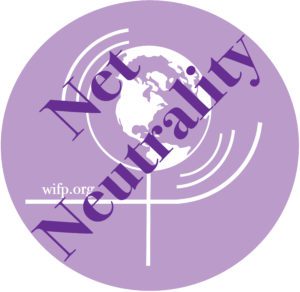Women’s Media List
— Introduction —
This is a compilation of print periodicals by, and about, women (1848-2012). We are continuing to compile this listing and welcome additions of early media that we are unaware existed, as well as current media not already included. While there are undoubtedly many that we are not aware of throughout the world, we are eager to share the over 25 hundred that we do know about.
We define women’s media as media owned and operated primarily by, and about, women. We do not include men’s “women’s magazines” directed at women, even if they have a female staff. We do include academic media if women control the content and make up the leadership and staff. Inclusion of some men does not disqualify inclusion as women’s media.
— Contents —
— Editors —
Martha Allen, Samantha Young, Sara Friedman, Rebecca Little, Elisha Sum, Emilia Ninova and Trent Schwartz
— About Women’s Media and Media Democracy —
by Martha Leslie Allen, Director of WIFP
There are approximately 2,500 print periodicals by, for and about women that we know about. Add to that all the women’s Internet periodicals, publishers, media organizations, news services, film & video groups, radio groups and regular women’s programs, music groups, women’s bookstores, women’s theatre, media blogs and email lists — and it becomes clear how strong and extensive women’s media has become.
We are working for media democracy because we believe media should be available for communicating, not just making money and controlling the flow of information. Power is the number of people you can reach with your information and if huge interlocking corporations have the majority of the outreach, they can influence who is elected to office, if a war gets more backing or not, which injustices get exposed and which do not, and they determine what our future will be. Therefore we need to examine the whole structure of communications and work toward making the outreach more equal. We need to make sure everyone that wants one has a voice. And in the meantime we also increase our own means of communications.
People’s media have grown in outreach significantly, particularly with the advent of the Internet, so that the mainstream corporate media no longer have the only say in how everything is portrayed. The mainstream media continue to consolidate and grow larger but at the same time the consciousness about this media structure and its effects are now known more widely. While in 1972, when the Women’s Institute for Freedom of the Press (WIFP) was founded, there were few, if any, working on media democracy, now there are many, many groups that are active and increasingly effective. Women have always been among the most active on this issue because we know that media democracy is crucial to our own lives, to justice for all people and living things, and for the survival of our planet.
— About Early Women’s Media —
by Martha Leslie Allen, Director of WIFP
Women began publishing reform periodicals in the 1840s. In 1848, Amelia Bloomer launched The Lily, a paper whose masthead declared itself “Devoted to the Interests of Women.” And two decades later, in 1868, The Revolution was founded by Elizabeth Cady Stanton and Susan B. Anthony to cover the many concerns of women that the male-owed press of the day failed to cover: healthier dress for women, the sexual double standard, marriage and divorce, prostitution and issues of particular concern to working women, such as equal pay for equal work.
In 1870 Victoria Woodhull and Tennessee Claflin began publishing Woodhull & Claflin’s Weekly in New York City. Topics included abortion, venereal disease, prostitution, the occult, suffrage and women’s restrictive clothing. Also in 1870 the Woman’s Journal, a suffrage paper, appeared, edited by Lucy Stone and her husband Henry Blackwell, and Mary Livermore, who had given up her paper, The Agitator, to join them. Josephine St. Pierre Ruffin edited the New Era Club’s Woman’s Era Magazine in Boston. Ruffin, a woman of mixed ancestry — African, Indian, French and English — took the lead in calling on black women to organize a national organization since many white women excluded Afro-American women from their organizations.
The early 20th Century brought Margaret Sanger’s Woman Rebel in 1902. She focused almost exclusively on the issue of birth control that she saw crucial to women’s health and well-being. In 1917 Woman Citizen formed as a combination of the Woman’s Journal and several smaller suffrage papers. Other papers arose in the years before the birth of the current women’s media movement in the 1960s, mostly connected to women’s organizations.
From the 1960s onward, women forged extensive communication networks in diverse forms of media. Between 1963 and 1983 alone there were more than 1,380 periodicals by women publishing in print form. Women of color published more than 37 periodicals during this period. To see a history of women’s media during these years, see History of Women’s Media.
In the 1960s, 70s and 80s to produce our own media, women were spending countless hours typing and typesetting, mimeographing, meticulously putting pasted-up copy onto our layout pages and having our work printed. With the arrival of the 1990s and the 21st Century, technology changed tremendously particularly with the advent of more widespread use of the Internet and desktop publishing. These developments made it much easier for more women of various means to get their ideas and information out. Young women increasingly lead this women’s media movement. More voices and more diverse forms of media ensure that women will not be silenced again.
 The Women’s Institute for Freedom of the Press
The Women’s Institute for Freedom of the Press
